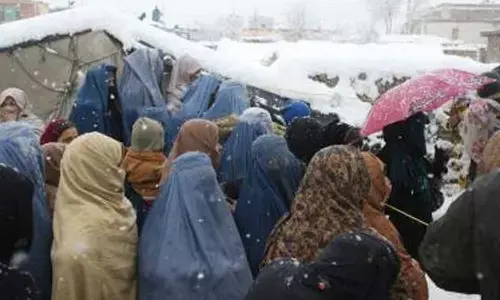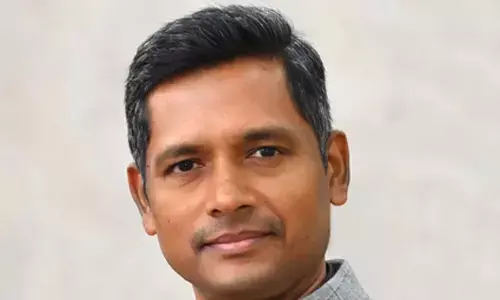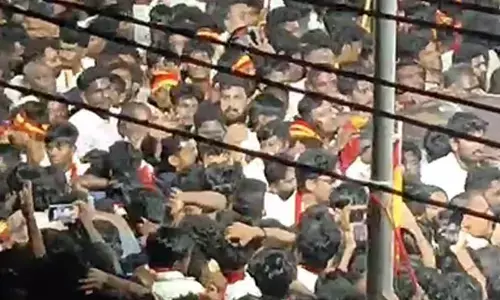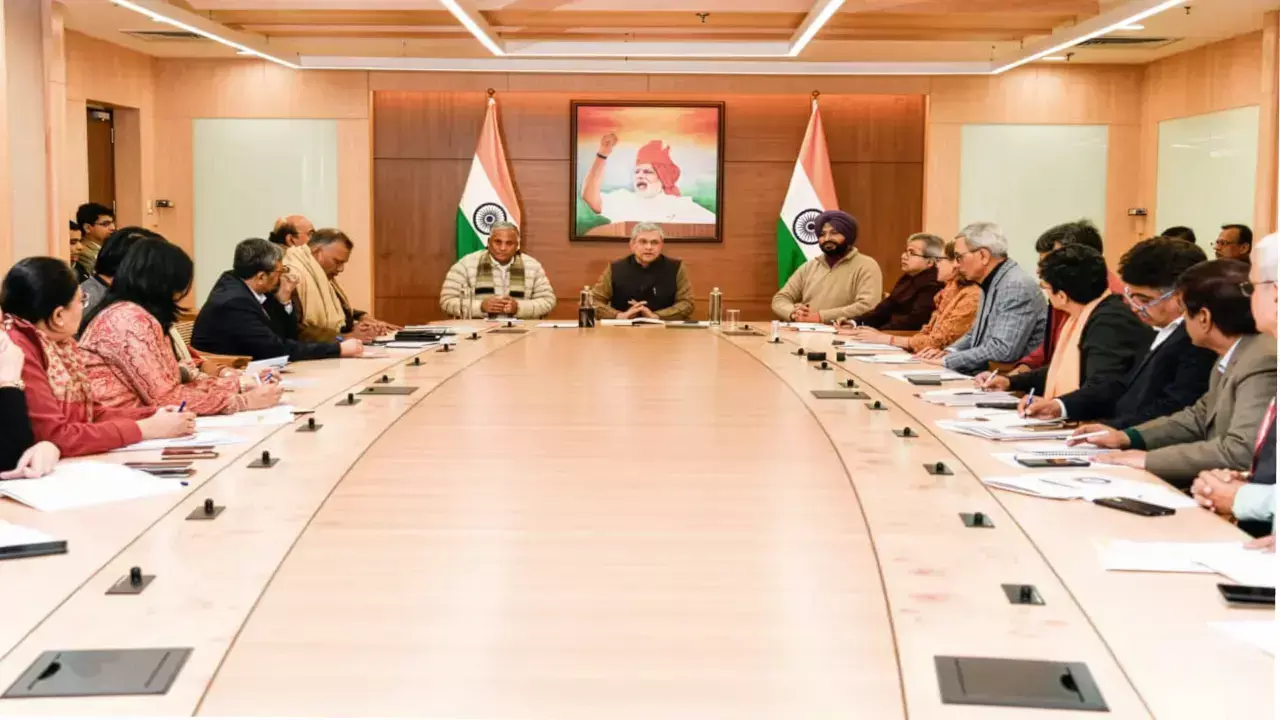Which colour will punjab pick?

Which colour will punjab pick?
For the first time, Punjab is witnessing not just high-voltage politics but also a multi-cornered and multi-coloured contest
For the first time, Punjab is witnessing not just high-voltage politics but also a multi-cornered and multi-coloured contest. While the Congress party says "Phir Jeene ki Tamanna Hai," (there is a desire to live again), AAP says "Tumhe Dhakka Dena Hai" (We need to push you out).
In the past, it used to be mainly a fight between the Congress and the Shiromani Akali Dal. But now, there are other major players in the poll battle like AAP which has occupied the space created by other political parties like Shiromani Akali Dal and BJP which are contesting separately. The Sanyukt Samaj Morcha (SSM) is a new entrant this time led by octogenarian leader Balbir Singh Rajewal. He was in the forefront of the farmers agitation and is now the chief ministerial face of SSM.
The AICC vice-president Rahul Gandhi, as he claims, was busy listening to people's wishes and voices and, perhaps, could not make out what exactly the party and people want. This led to delay in taking a decision about the chief ministerial candidate and by the time he announced the name of Charanjit Singh Channi, it was a bit too late. AAP had already made deep inroads and is now posing a major challenge to the Congress party.
The main problem that has always been dogging the Congress in Punjab is infighting. In fact, old timers in Congress always used to say no opposition is required to destroy Congress. The opposition within is enough to upset the apple cart. Well, in the case of Punjab elections it has once again been proved right. The internal rivalry between cricketer-turned-politician and PCC chief Navjot Singh Sidhu and the former Chief Minister Capt Amarinder Singh led to the latter's exit and the Congress party brought in Charanjit Singh Channi as his successor. But the war within did not end and the party continues to be bogged down under the weight of rivalry between Sidhu and Channi.
The Congress feels that being the first Dalit Chief Minister of Punjab, Channi would be able to send other parties back to drawing board. The reason for this confidence is that the State has 32 per cent of SC voters. It has to be seen how the Dalit vote bank would respond this time, particularly in the Doaba belt.
Channi who was sworn in as CM in September 2021 tried to project himself as AAM aadmi (common man's) Chief Minister with prime concern for the problems faced by the citizens. He did all he could to be people's CM. He has been simple in his lifestyle. He used to hear the grievances outside his house in Chandigarh, participate in bhangra with students, stop the cavalcade and receive the petitions from the common man, bless the newly wed couples. He was also in news for having celebrated a low key wedding of his son in a Gurudwara and eating food sitting on the floor with guests.
Channi had announced waiver of pending water and power bills, regularised contractual staff, and regularised the property of people living in unauthorised areas. But then, since he has been in office for a short time, the promises he made are yet to be implemented. He certainly started well but at the ground level, people say he could not make the kind of image that is required for voters to swing in favour of Congress party.
Still, the Congress party refuses to learn a lesson and continues to be haunted by internal squabbles. Surveys indicate that Channi is more popular than Sidhu. How the PCC president will digest this remains to be seen.
The advantage Channi has is that he is a Dalit and the Malwa (South-East part of the State) region which accounts for over 60 seats out of 117 has nearly one-third of the Dalit population of Punjab. They comprise Mazhabi Sikhs, who are linked to the agriculture. Many of them live in extremely poor economic conditions and are landless farm labourers. The education levels among Mazhabi Sikhs are also believed to be very low. In the 2017 elections, Congress had won 40 seats in Malwa region while AAP 18, SAD 8 and BJP 1.
Similarly, Majha area Amritsar, Taran Taran, Gurdaspur and Pathankot also have substantial Dalit population. In urban areas, there are about 12 per cent Dalits whose economic condition is poor. If we look at the results during 2017 elections, in Majha which has 25 seats, Congress had won 22, SAD 2 and BJP 1.
Dalit groups are also there in Jalandhar, Kapurthala, Hoshiarpur and Nawanshahr districts In Doaba region. They are traditionally artisans and form the largest chunk among Punjabi Dalits. Compared to other regions, Dalits in this region have seen some uplift mainly due to overseas migration and access to education. Doaba has 23 seats and in the last elections Congress bagged 15 seats, SAD 5, AAP 2 and BJP 1.
But then this time the situation is different because there are more players in the political arena. The Sanyukt Samaj Morcha is not there for power. This is what its president Balbir Singh Rajewal claims. The party says there are many issues which need to be addressed. He feels that though there are 117 MLAs in Punjab Assembly, hardly anyone knows the pulse of people. According to him, no one addressed issues such as need to give interest-free farm loans, root out corruption and drug mafia.
Interestingly, the manifestos of AAP and SSM appear similar. Who will cut into whose votes and who would be benefited by this would be of interest and a matter of analysis once the results are announced.
Against the backdrop of this scenario, the single-phase polls have emerged as highly interesting and important. Every party is promising to change Punjab which is ridden with dark issues such as drug menace, unemployment and corruption. Whoever forms the government surely has major challenges.
The poll surveys conducted so far by many agencies have thrown diametrically opposite results. While one survey gives clear majority to AAP which according to them would get 59 out of 117 seats, another survey indicates hung assembly.
Undoubtedly, AAP has been able to make deep inroads in Punjab and one cannot rule out the possibility of AAP securing a good number of seats or even coming to power. The fact is that the comedian-turned-politician Bhagwant Singh Mann so far is ahead of others in terms of popularity followed by Charanjit Singh Channi as CM candidates. While Mann is more favoured in Malwa and Majha regions, Channi seems to be the choice in Doaba region. BJP is unlikely to cross the single digit.
Certainly, it is not going to be a cake walk for any party. While the main fight is going to be between the Congress and the AAP, the SAD is trying its best to regain its lost glory and the BJP would have to take a back seat for the present. There are many parties with different colours. The general tradition has been that Congress leaders wear white turbans, Shiromani Akali Dal leaders wear blue turbans, AAP has chosen yellow colour. The farmers union leaders chose green. It is going to be, "Mohe Rang De Basanti Chola," (These are lyrics from a film of 2006 which means Paint me yellow. The song refers to independence struggle and protests during Vasant Panchami). With so many colours around this time and every party saying "Mohe Rang De," let us see which colour the people would prefer and in what colour Punjab would be painted by the party that would to come to power.















